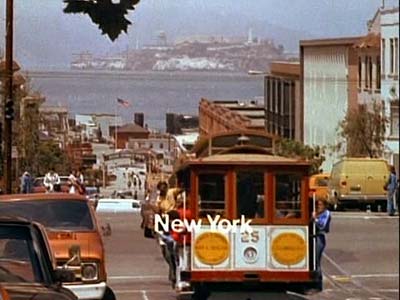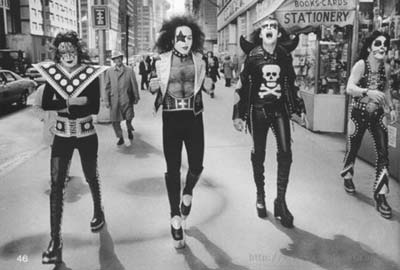When does a potential crisis become an actual crisis, and how and why does it happen? Why did most everyone believe there were no problems in the US (or Japanese or European or British) economies in 2006? Yet now we are mired in a very difficult situation. “The subprime problem will be contained,” said now controversially confirmed Fed Chairman Bernanke, just months before the implosion and significant Fed intervention. I have just returned from Europe, and the discussion often turned to the potential of a crisis in the Eurozone if Greece defaults. Plus, we take a look at the very positive US GDP numbers released this morning. Are we finally back to the Old Normal? There’s just so much to talk about. (…)
Before we get into the main discussion point, let me briefly comment on today’s GDP numbers, which came in at an amazingly strong 5.7% growth rate. While that is stronger than I thought it would be (I said 4-5%), there are reasons to be cautious before we sound the “all clear” bell.
First, over 60% (3.7%) of the growth came from inventory rebuilding, as opposed to just 0.7% in the third quarter. If you examine the numbers, you find that inventories had dropped below sales, so a buildup was needed. Increasing inventories add to GDP, while, counterintuitively, sales from inventory decrease GDP. Businesses are just adjusting to the New Normal level of sales. I expect further inventory build-up in the next two quarters, although not at this level, and then we level off the latter half of the year.
While rebuilding inventories is a very good thing, that growth will only continue if sales grow. Otherwise inventories will find the level of the New Normal and stop growing. And if you look at consumer spending in the data, you find that it actually declined in the 4th quarter, both annually and from the previous quarter. “Domestic demand” declined from 2.3% in the third quarter to only 1.7% in the fourth quarter. Part of that is clearly the absence of “Cash for Clunkers,” but even so that is not a sign of economic strength.
Second, as my friend David Rosenberg pointed out, imports fell over the 4th quarter. Usually in a heavy inventory-rebuilding cycle, imports rise because a portion of the materials businesses need to build their own products comes from foreign sources. Thus the drop in imports is most unusual. Falling imports, which is a sign of economic retrenching, also increases the statistical GDP number.
Third, I have seen no analysis (yet) on the impact of the stimulus spending, but it was 90% of the growth in the third quarter, or a little less than 2%.
Fourth (and quoting David): “… if you believe the GDP data - remember, there are more revisions to come - then you de facto must be of the view that productivity growth is soaring at over a 6% annual rate. No doubt productivity is rising - just look at the never-ending slate of layoff announcements. But we came off a cycle with no technological advance and no capital deepening, so it is hard to believe that productivity at this time is growing at a pace that is four times the historical norm. Sorry, but we’re not buyers of that view. In the fourth quarter, aggregate private hours worked contracted at a 0.5% annual rate and what we can tell you is that such a decline in labor input has never before, scanning over 50 years of data, coincided with a GDP headline this good.
“Normally, GDP growth is 1.7% when hours worked is this weak, and that is exactly the trend that was depicted this week in the release of the Chicago Fed’s National Activity Index, which was widely ignored. On the flip side, when we have in the past seen GDP growth come in at or near a 5.7% annual rate, what is typical is that hours worked grows at a 3.7% rate. No matter how you slice it, the GDP number today represented not just a rare but an unprecedented event, and as such, we are willing to treat the report with an entire saltshaker - a few grains won’t do.”
Finally, remember that third-quarter GDP was revised downward by over 30%, from 3.5% to just 2.2% only 60 days later. (There is the first release, to be followed by revisions over the next two months.) The first release is based on a lot of estimates, otherwise known as guesswork. The fourth-quarter number is likely to be revised down as well.
Unemployment rose by several hundred thousand jobs in the fourth quarter, and if you look at some surveys, it approached 500,000. That is hardly consistent with a 5.7% growth rate. Further, sales taxes and income-tax receipts are still falling. As I said last year that it would be, this is a Statistical Recovery. When unemployment is rising, it is hard to talk of real recovery. Without the stimulus in the latter half of the year, growth would be much slower.
So should we, as Paul Krugman suggests, spend another trillion in stimulus if it helps growth? No, because, as I have written for a very long time, and will focus on in future weeks, increased deficits and rising debt-to-GDP is a long-term losing proposition. It simply puts off what will be a reckoning that will be even worse, with yet higher debt levels. You cannot borrow your way out of a debt crisis. (…)
Now, there are bullish voices telling us that things are headed back to normal. Mainstream forecasts for GDP growth this year are quite robust, north of 4% for the year, based on evidence from past recoveries. However, the underlying fundamentals of a banking crisis are far different from those of a typical business-cycle recession, as Reinhart and Rogoff’s work so clearly reveals. It typically takes years to work off excess leverage in a banking crisis, with unemployment often rising for 4 years running. We will look at the evidence in coming weeks.
{ John Mauldin newsletter, January 29, 2010 | PDF | Continue reading | Read more: A Bubble in Search of a Pin }























